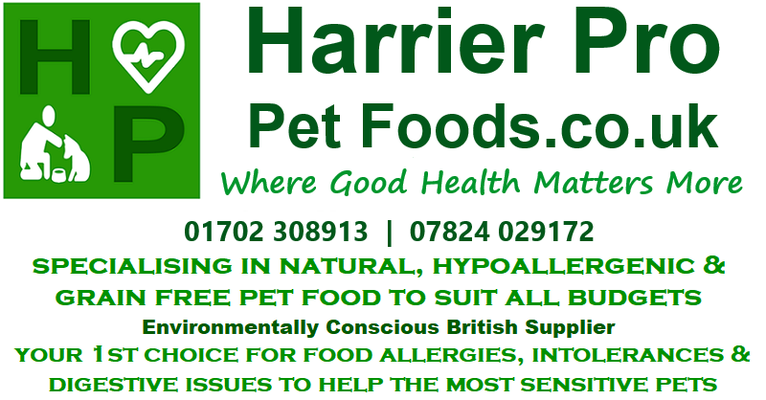Dry pet food storage advice
Posted by Peter Lam on
Tips For Dry Pet Food Storage
To keep your furry friends happy and healthy, please read and follow our dry pet food storage advice.
The Importance Of Proper Storage
Dry pet food (Kibble) is easy to store and feed, but like all types of pet food, it is perishable.
Our pet food is superb for the optimum health of your pets but to maintain the quality and nutritional value, you should still learn how to store it properly.
Our Advice
Firstly we feel it's a good idea to make a note of when your bag of pet food is opened to avoid any potential premature spoiling of the food further down the line. You can simply write the date on the bag with a felt tip pen etc. This helps to ensure you don't keep an opened bag of pet food for too long, to ensure optimum freshness.
Risks From The Elements
It's important to remember that once you open a bag of pet food, it's freshness is exposed to the elements. The three factors that affect the nutritional value and quality of pet food once it has been opened are air, moisture and high temperatures. To help combat these potential issues, please continue reading for our dry pet food storage advice.
Once your bag of pet food has been opened, we recommend that you seal your bag of pet food securely after, because it minimizes its exposure to air, which can contaminate your pet food with bacteria.
How To Reseal Your Bag Securely
To reseal your pet food bag, you should reduce the amount of air in the bag as much as possible then roll down the sides and use a clip which is suitable and strong enough to help keep the bag closed. It may be a good idea to use two, one at each end if necessary.
Using Airtight Containers
For extra protection, we recommend airtight containers which should ideally be made of plastic, stainless steel or even something like a glass jar. All containers should be clean of course beforehand, if not already. These containers can also be a good way of protecting the food from vermin etc.
Choosing Suitable Plastic Containers
Ideally you should only use plastic containers that are purposefully designed for storing food to avoid risks of toxicity from the inappropriate plastic used.
All types of plastic containers are marked with the following symbols -

The above image shows which types of plastic containers are suitable for food storage.
In this instance, containers with the numbers 2, 4 and 5 are suitable for food use.
You can find out more about the different types of plastics at -
https://yesstraws.com/blogs/news/types-of-plastic-plastic-numbers-guide
Benefits Of Stainless Steel Containers
Stainless steel containers can be easier to clean and can potentially last longer.
Extra Protection
Ideally you should store the whole resealed bag of pet food inside of the airtight containers. That way, the bag can provide an added barrier that helps seal in fats and oils to help prevent them from becoming rancid later.
Care Of Containers
It's a good idea to always wash out the container between refills, in case any oils or bits of kibble which may have become rancid, affect the new bag of food.
We recommend thoroughly washing the storage containers with hot, soapy water or white vinegar. Then, rinse and dry completely before refilling. Excess moisture can cause mold and mildew to grow on the food.
Choosing A Suitable Location
To help maintain the nutritional quality and shelf life of dry pet food, it is important that you store the food and its container in a cool, dry place.
We don't recommend a garage or shed as during the warmer months, the temperature could potentially rise considerably.
Share this post
0 comment
